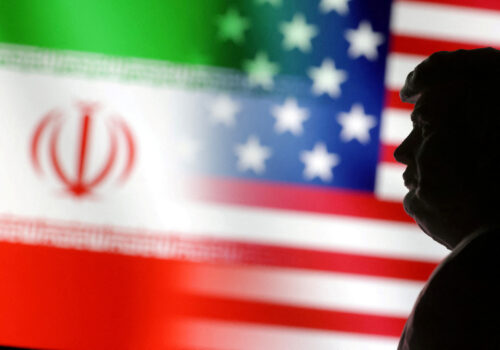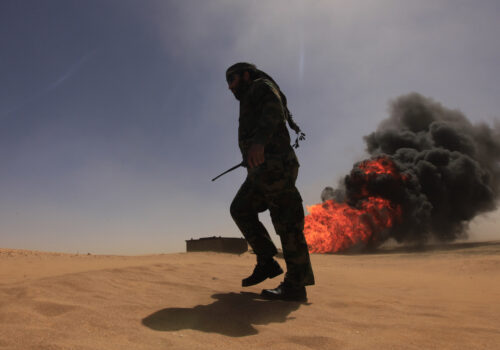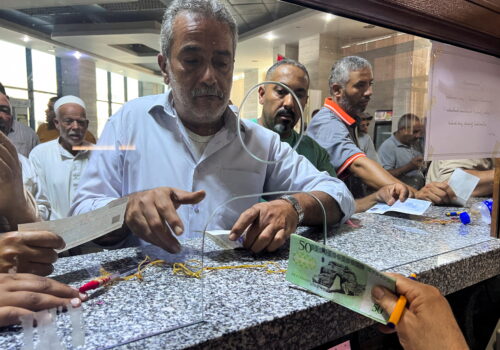From Tripoli to Tehran: Lessons from Libya in US-Iran nuclear talks
“Either you get rid of your weapons of mass destruction or [the US] will personally destroy them and destroy everything with no discussion.”
Strong words from the US president, directing a clear message to a strategic threat in the Middle East that the advancement of its nuclear program would evoke severe repercussions.
Except, these are not words directed towards the regime in Iran by President Donald Trump. These are the words of then-President George W. Bush in a 2001 communique to Libyan leader Muammar Gaddafi. That bid to end Tripoli’s nuclear program would ultimately prove successful, and in 2003, Gaddafi voluntarily renounced the program and gave up the country’s stockpile of chemical and biological weapons.
Twenty-one years later, the nuclear disarmament of Libya serves as a model for the United States, one that Trump seeks to replicate in current negotiations with the Islamic Republic.
Senator Tom Cotton, the third-ranking Republican in the US legislature and chair of the intelligence committee, said in April that Trump “prefers a deal [with Iran] like Libya cut with the United States in 2003.” Just a week later during a high-stakes White House visit, Israeli Prime Minister Benjamin Netanyahu told reporters that he wants to see a full disarmament of Iran, adding that “if it can be done diplomatically, in a full way, the way it was done in Libya, I think that would be a good thing.”
Replicating key strategies employed in the Libyan case example could offer US negotiators the opportunity to fully realize the nuclear disarmament of Iran. After all, both Libya and Iran congruently developed and grew their nuclear programs in an attempt to establish deterrence against the Western bloc, especially towards the end of the Cold War and the era of nonalignment. To similarly reach a deal with the Islamic Republic over its nuclear program, the Trump administration must understand and draw on the lessons learned from Libya’s disarmament.
Negotiations amid shifting geopolitical dynamics
Gaddafi’s pan-Arab dreams of becoming a regional hegemon fizzled out by the 1990s, and by 1998, he announced Libya’s withdrawal from the Arab League, solidifying his international isolation. As Gaddafi started to feel the noose of sanctions and a no-fly zone tightening, he used the country’s nuclear program as a bargaining chip in his rapprochement with the West.
In this context—not too dissimilar to Iran today—Libya began negotiations with the United States amid a shift in the region’s balance of power. Libya participated in direct nuclear talks at the beginning of 2003, as Washington was still grappling with the September 11, 2001, terror attacks. At the time, then-US Secretary of State Colin Powell was already building international support for Washington’s military action against Iraq, citing Saddam Hussein’s intention to develop chemical, biological, and nuclear weapons as a casus belli. As the weeks passed and the US invasion ensued, Gaddafi saw the toppling of Hussein as an example of what could be done to him in Libya. Just six days after US forces captured Hussein, Gaddafi renounced Libya’s nuclear program.
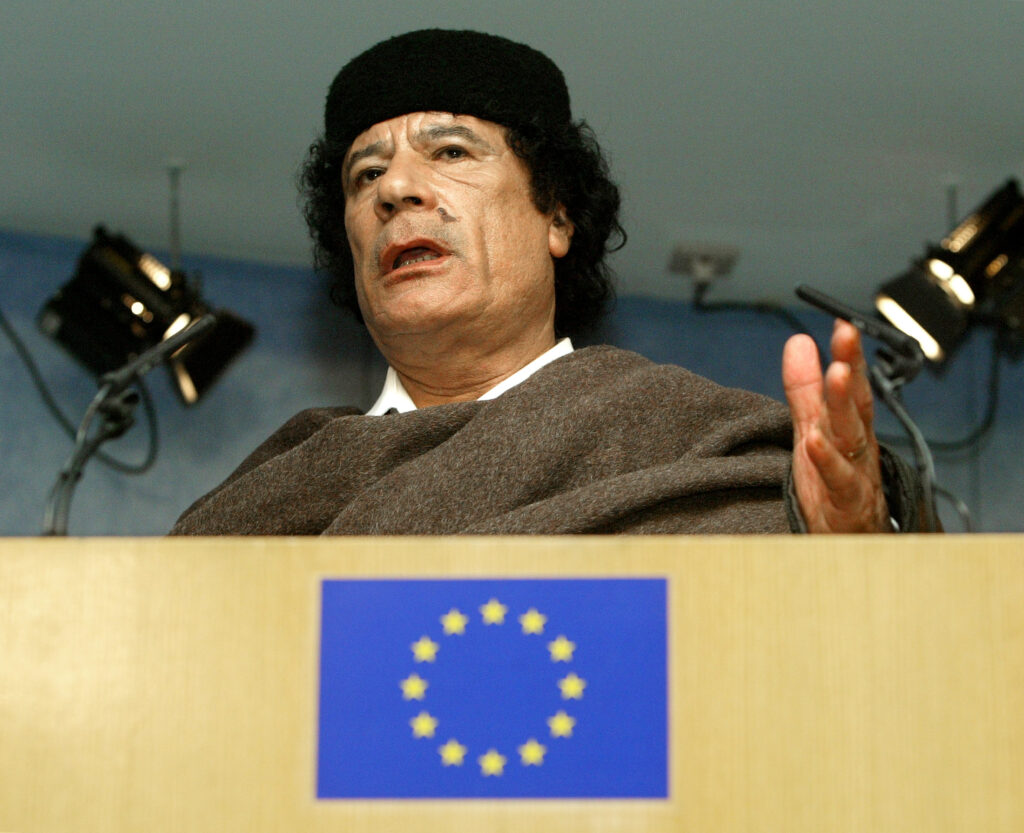
Like Gaddafi in 2001, Iran’s Supreme Leader Ali Khamenei is beginning direct negotiations with the United States nearly a year and a half after the October 7, 2023, Hamas attacks on Israel that launched the war in Gaza. Like Gaddafi, Khamenei has grown increasingly alienated amid the collapse of Tehran’s proxy and alliance network.
With Hezbollah decimated in Lebanon, Hamas incapacitated in Gaza, and Bashar al-Assad ousted in Syria, the Islamic Republic is leveraging its nuclear program to negotiate a favorable future to solidify its regime’s survival. Coupled with President Trump’s return to “maximum pressure” against the regime, the Ayatollah seems to be heeding US threats of direct military action, just as Gaddafi did in 2001.
Khamenei understands that, with limited military and political access, cutting a deal with Washington is the only way forward without risking the regime’s survival.
A diverging outlook for the future
While Republican leaders advocate using the Libya case as a model in current nuclear negotiations with Iran, it’s important to remember that Tehran’s political calculus today is fundamentally different than Tripoli’s was some twenty years ago. In entering negotiations with the United States, Libya envisioned a future shaped by shifting values and priorities that diverged significantly from the path the Islamic Republic is currently pursuing.
By the late 1990s, Gaddafi was already grooming his second-born, Saif al-Islam, to become the country’s next leader. Al-Islam began representing the country in high-level negotiations with the United Kingdom over the Lockerbie case in the late 1990s, and later with the United States over the nuclear disarmament issue. In these negotiations, al-Islam laid out a different vision for the country’s future, one that was in direct opposition to his father’s. He wanted to open Libya up to the West and attract investment and development projects, just as other oil-rich Gulf states have successfully modeled. During negotiations, al-Islam’s opportunistic pragmatism steered the country away from his father’s ideological commitments, which only plundered the country, leaving him and his regime’s survival at stake. It was through this forward-focused vision that Libya was willing to voluntarily give up its nuclear program in exchange for sanctions relief and closer ties with the West.
SIGN UP FOR THIS WEEK IN THE MIDEAST NEWSLETTER
In contrast, Iranian negotiators lack that evolved vision for the future. They represent the interests of an increasingly senile Ayatollah without a clear vision for the future of his country. Unlike al-Islam, Tehran’s leadership is not interested in ameliorating its political and international posturing; instead, their sole motivation lies in regime preservation. In negotiations, Iranian negotiators will likely try to ensure that the regime maintains some access to enrichment capabilities to preserve the perception of projected power. This will give US negotiators little “wiggle room” to convince Iran to fully give up its nuclear program, unlike in Libya which was willing to completely abandon its nuclear ambitions in exchange for a reproachment with the West. Already, Trump’s negotiation team, led by Middle East envoy Steve Witkoff seems to be flip-flopping on its red lines for negotiations to accommodate Iran’s position, ranging from full disarmament to limited enrichment.
Furthermore, Iran lacks the trust Libyan negotiators had in guarantees made by the United States and the international community. This perception of trust is evidenced in al-Islam’s 2003 interview with Al-Sharq Al-Awsat, where he relayed that “America has committed itself to defend us” in exchange for Libya’s disarmament, adding that “agreements on military and security cooperation” would follow suit after signing the agreement. Yet as the years passed, Libya grew increasingly skeptical of US guarantees and the promise of sanctions relief. In a 2005 interview, Gaddafi told CNN’s Jonathan Mann that he “doesn’t think America fulfilled its commitments and pledges vis-a-vis Libya,” adding that “Libya has not been rewarded for the good service that it did for world peace.”
Twenty years later, Iran seems to have learned from Libya’s example to remain skeptical of US guarantees, including the promise of sanctions relief and the preservation of their nuclear program short of weaponization. Moreover, Trump’s 2018 unilateral withdrawal from the Joint Comprehensive Plan of Action (JCPOA), even after multiple International Atomic Energy Agency (IAEA) reports confirmed Iran’s compliance with the agreement, has only reinforced hardliners’ narrative that the United States cannot be trusted. In fact, in the wake of the US withdrawal from the JCPOA, the Islamic Republic weakened moderates and reformists within Iran who had initially supported the deal, like President Hassan Rouhani and Foreign Minister Mohammad Javad Zarif.
Additionally, the domestic conditions that allowed Gaddafi to accept the deal without risking his projection of strength lie in the public transparency, or lack thereof, of Libya’s nuclear program. When Gaddafi gave up his stockpiles and centrifuges, little was known about the scale of Tripoli’s enrichment and nuclear development. The IAEA found out only after the signing of the deal that Libya was enriching weapons-grade uranium up to 80 percent. This posturing allowed Gaddafi to maneuver on his ideological commitment to anti-Western resistance. On the other hand, Iran has been very vocal about their country’s nuclear program and has leveraged the program to promote and export the Islamic revolution’s ideology in the region. Because of this, Iranian negotiators will have less of an incentive to fully disarm the nuclear program as they risk weakening the Islamic Republic’s projection of power in the region.
The way forward
Still, there’s an opportunity for US negotiators to “seal the deal” on Iran’s nuclear program and replicate the success of Libya’s disarmament. While both regimes remain self-interested in preserving their power, it will be up to Iran to follow Gaddafi’s example in giving up its reliance on advanced weapons development and a network of proxies to carry out its political bargaining. Without an evolved vision for the country’s future, one that reflects the political will of Iranians, any deal risks being spoiled by a change of administration or Iranian leadership.
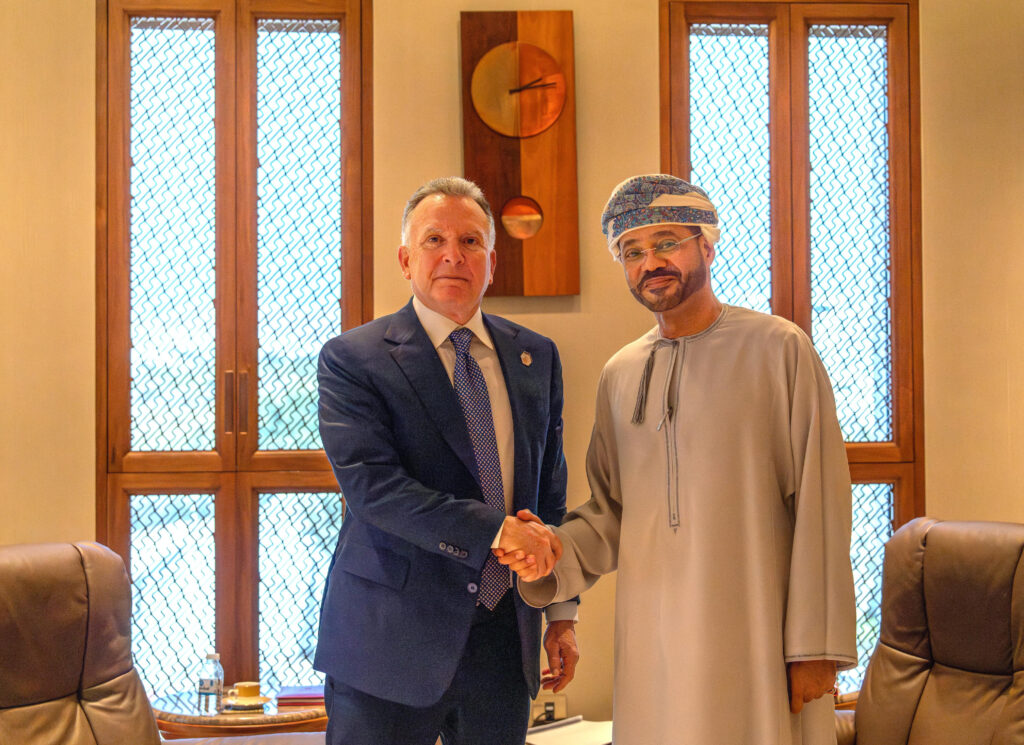
Drawing on the Libya example, US negotiators will need to work to influence the regime’s cost-benefit analysis, one that signals to the Ayatollah that his nuclear program is in direct opposition to the longevity of his regime, just as it had done with Gaddafi. Doing so will depend heavily on establishing trust and including ironclad security guarantees for US interests, as well as sanctions relief for Iran. Already, Trump has signaled his intent to follow through on his threat of direct military action by positioning six B-2 bombers, roughly 30 percent of the US Air Force’s stealth bomber fleet, on the island of Diego Garcia in the Indian Ocean, in a direct show of willingness to act militarily against Tehran.
In the meantime, Trump has given an explicit two-month deadline to reach an agreement on the nuclear issue. While the Libya deal took nearly three times as long, negotiators now have the opportunity to reshape the strategic balance of power in the region, one in favor of peace, security, and prosperity. Still, the US administration must understand that Libya’s disarmament was the exception, not the standard. Threading the needle between both cases is what could allow negotiators the opportunity to replicate Libya’s success.
Yaseen Rashed is the assistant director of media and communications at the Atlantic Council’s Rafik Hariri Center & Middle East Programs and a Libya analyst.
Further reading
Fri, Apr 11, 2025
The Iran nuclear talks are Trump’s decisive moment on military strikes
MENASource By Daniel B. Shapiro
Within a relatively short time, Donald Trump is likely to face the decision point on whether or not to pursue a military strike against Iran.
Wed, Apr 2, 2025
Libya’s political deadlock endures. There is a case for Trump and Meloni to challenge the status quo.
MENASource By
The political crisis in Libya is one that the US and Italy may be uniquely postured, and incentivized, to quell.
Wed, Apr 16, 2025
Solving Libya’s economic collapse will require confrontation—not consensus
MENASource By Emadeddin Badi
If the status quo continues, the next phase of Libya’s crisis will not be quiet erosion. It will be public revolt.
Image: Security team member Pat Galardo guards components of Libya's nuclear weapons program at the Y-12 National Security Complex in Oak Ridge, Tennessee, March 15, 2004. The components were airlifted from Libya in January and put on display for a press briefing by U.S. Energy Secretary Spencer Abraham. Shown are the centrifuge casings that house rotation machines used in uranium enrichment. MANDATORY CREDIT REUTERS/Paul Efird/Knoxville News Sentinel PE/HK
